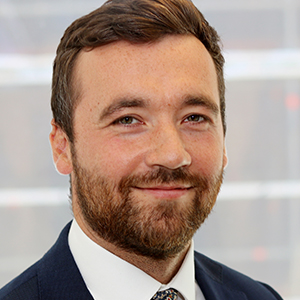Aviation litigation is a specialist area; fatal air accidents are statistically rare but devastating when they do occur. Families who lose loved ones in air accidents have a simple hierarchy of needs. Firstly, they want to know how and why their loved one died – the causes of the accident. Secondly, they want to prevent other families from going through the same experience – through the prevention of future accidents. Thirdly, they want compensation, especially where there is financial dependency – no amount of money ever replaces a loved one but the UK’s imperfect system of rules-based compensation is the only method available.
Flying is safe and has been progressively safer for decades. Statistically, the chances of being killed in an airline accident is around one in 11 million. The chances shorten for light aircraft and helicopters, in some scenarios reducing to around one in a million.
The coroner’s inquest
The international nature of air travel means accidents happen worldwide. Examples over the past 15 years are the 2007 Kenya Airways crash in Cameroon, the 2006 One Two Go airline crash in Thailand, the 2009 Air France Flight 447 crash over the Atlantic Ocean, the 2014 shooting down of Malaysian Airlines Flight 17 over eastern Ukraine and the 2019 Ethiopian Airlines Boeing crash.
There are mechanisms for official accident investigations in most cases, but these can be lengthy, imperfect and politicised. Families in this jurisdiction have the added protection of a coronial inquest, so long as the body of the deceased is repatriated to England and Wales. Coronial inquests can be powerful public platforms for families to establish how their loved one died.
Overseas fatal air accidents often result in remains being cremated, and ashes returned to families back home. Cremation ashes do not trigger the coronial jurisdiction, as they do not constitute a body, so there will be no investigation and no inquest. This is often (understandably) overlooked by grieving families who learn too late that they will not get an inquest. Coroners also have powers under Regulation 28 of the Coroner and Justice Act 2009 to make public reports to prevent future deaths.
Compensation arbitrage
A family’s claim for their loved one is viewed very differently in the various available legal jurisdictions for redress. This is compounded by the fact that compensation will vary considerably amongst any manifest of passengers. Different legal systems provide widely (and sometimes wildly) varying amounts of compensation on a country-by-country basis. A single non-dependent fatality case (typically a child/student/retiree) would rarely reach more than £50,000 in this jurisdiction; however, in the United States it could conservatively be valued in excess of £5,000,000 (there are significant differences between the 50 states in the USA on heads of damage, and generosity of juries).
Aside from the USA, civil law jurisdictions tend to be far more generous than the UK when awarding damages for bereavement and emotional suffering: compare £15,120 for qualifying deaths here compared to £100,000 in Ireland and around £1,000,000 in Italy.
Jurisdiction and forum
Airlines (and commercial operators) under international law (the Montreal Convention 1999) are strictly liable for the death or injury to passengers for provable damages (liability is absolute for proven damages up to 128,821 Special Drawing Rights). In an airline disaster, the airline is overwhelmingly on the hook for liability under applicable principles of international law. There is a qualified defence available to the airline that it can exclude liability only if it proves that the damage was not caused by the airline or it was caused solely by the fault of a third party. The defence is available in a vanishingly small number of circumstances.
Technically there are five potential jurisdictions for the family to bring an action. Interestingly, the identity of those five jurisdictions normally varies on any given passenger manifest due to different ticketing arrangements (per passenger) and the different domiciles of those passengers. Hence, a detailed understanding of a variety of potential jurisdictions is necessary before sensible advice can be given to a bereaved family about the most favourable jurisdiction to bring a claim against the airline. This requires an international network of local lawyers willing and able to provide relevant and succinct advice.
Lawyers advising families need to be wary of thinking that their local jurisdiction is more favourable simply because it is the lawyers’ home jurisdiction. However, just because there may be an available jurisdiction does not mean that the court in that jurisdiction will accept it is the appropriate forum. The 11th Circuit Court of Appeals in the US ruled some time ago that procedural rules of forum non conveniens (meaning that a court has discretionary power to decline to exercise its jurisdiction where another court or forum may more conveniently hear the case) were still available under the Montreal Convention.
The aviation insurers controlling the handling and payment of claims by an airline will inevitably have their sights set on the most convenient jurisdiction and forum for them.
Multiple causes of action in different jurisdictions
Aviation accidents generally have a chain of causes. Rarely does just one factor prove to be the cause of a fatal accident. Hence, there are possible claims on different causes of action against multiple defendants in a variety of jurisdictions. There may be a claim against an airline in one set of jurisdictions, and a claim against an aviation manufacturer in another jurisdiction. For the virtual duopoly of airliner manufacturers, that means Airbus in France and Boeing in the United States.
Most aircraft and helicopters will also have some US-manufactured components and sub-components. For example, a European-manufactured helicopter may crash in this jurisdiction due to both pilot error and an issue with the flight control system, which itself is a US-manufactured component. That gives rise to two different causes of action by a claimant estate of a passenger, in both this jurisdiction and the US courts.
Time limits and limitation
Professional indemnity insurers have been continually involved in picking up cases where the family’s lawyers have forgotten that fatal and personal injury claims against airlines have a two-year time limit under the Montreal Convention.
Similarly, wrongful death and personal injury limitation periods in the US are typically two years for actions against any aviation-related entity – whether a commercial operator or aviation manufacturer. Some states have a one-year limitation period (e.g. Louisiana and Tennessee).
Independent investigation and disbursements
One of the key factors to this specialist area of practice is an intellectual and financial willingness to conduct an independent investigation into the technical causes of the aviation accident.
Typically there will be a government (or intergovernmental) level investigation (under the auspices of Annex 13 of the Chicago Convention 1944), where the industry stakeholders are represented (but the families not). These tend to take longer than two years, so that limitation periods have quietly passed before publication. Hence, the fairly obvious need to conduct a private independent investigation, using aviation experts and airline/aircraft/helicopter simulators to establish the likely causes of any given accident.
Experience has proved that these are expensive and are ongoing exercises, especially where the facts of the accident point to complex technical product liability issues, for example software problems with fly-by-wire flight control systems. The digitisation of aviation systems is now endemic in both the civil and military aviation spheres. This means that further expensive expertise is required in avionics systems to layer the knowledge in order to understand the sequence of the events leading to the accident.
Air accident tragedies have their own particular facts that usually contain significant unknown unknowns.
If you need advice about an aviation accident, please contact James Healy-Pratt and Owen Hanna.
This article is for general information purposes only and does not constitute legal or professional advice. It should not be used as a substitute for legal advice relating to your particular circumstances. Please note that the law may have changed since the date of this article.


